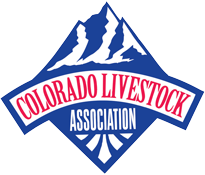Last night, the U.S. Small Business Administration (SBA) issued new guidance on the Paycheck Protection Program (PPP) in the form of two interim final rules (IFRs).
The first interim final rule amends existing PPP rules to reflect changes in the recently enacted Coronavirus Response and Relief Supplemental Appropriations Act of 2021, including on fees, borrower eligibility, loan amounts, eligible expenses, reliance on borrower certifications and loan increases, as well as a new registration requirement for all lenders. However, SBA notes that “most of this document restates existing regulatory provisions to provide lenders and new PPP borrowers a single regulation to consult on borrower eligibility, lender eligibility and loan application and origination requirements, as well as general rules on increases and loan forgiveness for PPP loans.”
- Sec 313 of the COVID relief package establishes a specific loan calculation for the first round of PPP loans for farmers and ranchers who operate as a sole proprietor, independent contractor, self-employed individual, who report income and expenses on a Schedule F, and were in business as of February 15, 2020. These entities may utilize their gross income in 2019 as reported on a Schedule F. Lenders may recalculate loans that have been previously approved to these entities if they would result in a larger loan. Please note that guidance for farmers and ranchers implementing this section can be found starting on page 37 of the IFR linked above and here.
Meanwhile, the second rule governs second-draw loans now available for borrowers with 300 or fewer employees, that saw a 25% or greater revenue drop in 2020 compared to 2019 and that have used the full amount of their first-draw PPP loan. According to SBA, Second-Draw PPP loans are for the most part subject to the same terms, conditions and requirements as First-Draw PPP loans. The maximum loan amount is $2 million or two and a half months’ worth of average payroll costs, whichever is less. The rule covers several calculations to determine eligibility and loan amounts.
- While the COVID package included a new payroll cost calculation for farmers and ranchers receiving First Draw PPP loans, it failed to specify how payroll costs should be calculated for Second Draw PPP loans for farmers and ranchers. The second IFR clarifies that the same general calculation for farmers and ranchers is applicable to both First and Second Draw PPP loans, with adjustments that (i) eliminate the provision for refinancing of an Economic Injury Disaster Loan (EIDL), which does not apply to Second Draw PPP, and (ii) apply the choice of time period for calculating a farmer’s or rancher’s payroll costs for Second Draw PPP, consistent with other Second Draw PPP loans. This IFR also specifies that, in calculating a farmer’s or rancher’s maximum loan amount, any employee payroll costs should be subtracted from the farmer’s or rancher’s gross income to avoid double counting amounts that represent pay to the employees of the farmer or rancher. More details on the calculation can be found starting on page 29 of the second IFR linked above and here.
It is understood that community financial institutions will be able to submit PPP loan applications at least two days prior to other lenders. However, SBA has not yet announced the date on which it will reopen its portal for PPP2 applications. More information can be found at SBA.gov/PPP or Treasury.gov/CARES.
Source: Danielle Beck, National Cattlemen’s Beef Association
